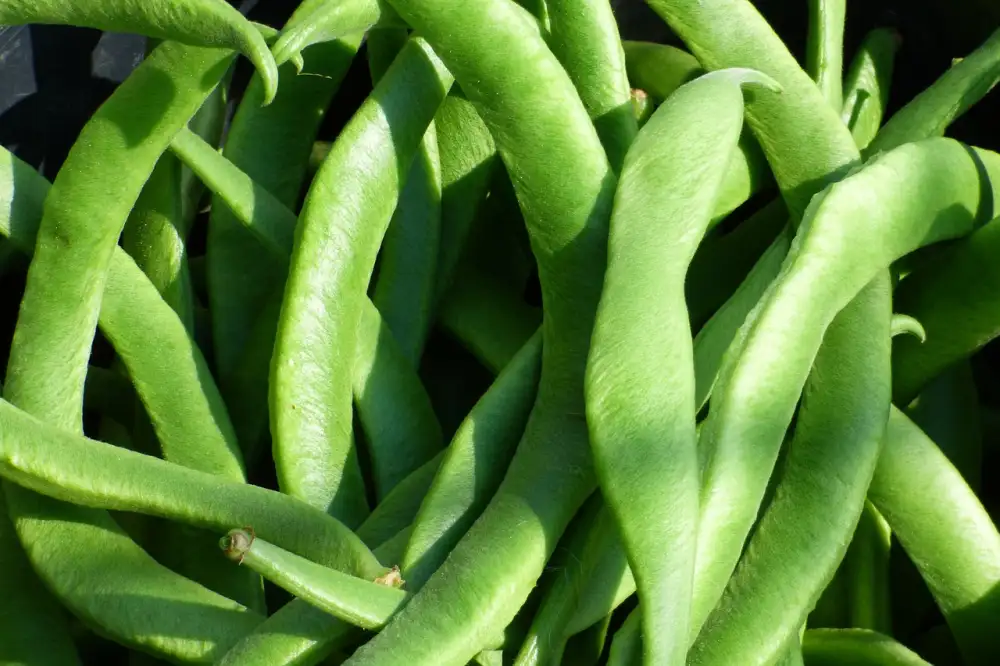Discover the Versatility of Runner Beans: A Homegrown Delight

Runner beans, also known as Phaseolus coccineus, are a versatile and nutritious vegetable that can add a burst of flavor to any dish. These vibrant green pods are a member of the legume family and are native to Central America. They got their name from their ability to grow long vines, which can "run" up to 10 feet in height. Runner beans have been cultivated for centuries and are now enjoyed by people all over the world for their delicious taste and numerous health benefits. Whether you're a seasoned cook or just starting out in the kitchen, runner beans are a fantastic ingredient to experiment with. In this article, we will explore the many ways you can incorporate runner beans into your culinary adventures and discover why they are truly a homegrown delight.
Health Benefits of Runner Beans
Runner beans are not only delicious, but they also offer numerous health benefits. These vibrant green beans are packed with essential nutrients, making them a great addition to your diet. Firstly, runner beans are an excellent source of dietary fiber, which aids in digestion and helps maintain a healthy weight. They are also rich in vitamins A, C, and K, as well as minerals like iron and magnesium. These nutrients contribute to strong bones, improved immune function, and healthy skin. Additionally, runner beans contain antioxidants that help fight against free radicals in the body and reduce the risk of chronic diseases such as heart disease and cancer. Incorporating runner beans into your meals can provide you with a wide range of health benefits while adding a burst of flavor to your dishes.
Culinary Uses of Runner Beans
Runner beans are not only nutritious but also incredibly versatile in the kitchen. They can be enjoyed in a variety of ways, making them a perfect addition to any meal. One popular method of cooking runner beans is by boiling or steaming them until they are tender yet still retain their vibrant green color. These cooked beans can then be used as a side dish or added to salads for an extra crunch.
Another way to incorporate runner beans into your culinary repertoire is by stir-frying them with other vegetables and seasonings. Their slightly sweet and nutty flavor pairs well with garlic, ginger, soy sauce, and sesame oil. This quick and easy cooking method helps retain the beans' crispness while adding a delicious depth of flavor.
For those who enjoy pickled vegetables, runner beans can be preserved in vinegar brine for a tangy and crunchy treat. Pickled runner beans make a great addition to charcuterie boards or can be enjoyed as a standalone snack.
If you're feeling adventurous, you can even use runner beans as a substitute for traditional pasta noodles. By slicing the beans lengthwise into thin strips, they can mimic the texture and appearance of spaghetti or fettuccine. Toss them with your favorite pasta sauce or pesto for a lighter and healthier alternative.
Lastly, don't forget about the versatility of dried runner beans. Once soaked overnight, they can be used in soups, stews, or even ground into flour for baking purposes. The possibilities are endless when it comes to incorporating these versatile legumes into your culinary creations.
Whether boiled, stir-fried, pickled, or used as a pasta substitute, runner beans offer a delightful taste and texture that will elevate any dish. So why not experiment with these homegrown delights and discover new ways to enjoy their versatility in your own kitchen?
Growing Runner Beans in Your Home Garden
Runner beans are a great addition to any home garden, as they are easy to grow and require minimal maintenance. Here are some tips for successfully growing runner beans:
- Planting: Choose a sunny spot in your garden with well-drained soil. Runner beans prefer slightly acidic soil, so it's a good idea to test the pH level before planting. Sow the seeds directly into the ground after the last frost, about 2 inches deep and 6 inches apart.
- Support: Runner beans are climbers, so they will need support as they grow. Install trellises or bamboo canes for them to climb on. Make sure the support is sturdy enough to hold the weight of the plants when they reach their full height.
- Watering: Keep the soil consistently moist but not waterlogged. Water deeply once or twice a week, depending on rainfall and temperature. Avoid overhead watering as it can lead to fungal diseases.
- Fertilizing: Runner beans are heavy feeders, so it's important to provide them with nutrients throughout the growing season. Use a balanced organic fertilizer or compost before planting and side dress with compost every few weeks.
- Pest Control: Keep an eye out for common pests like aphids, slugs, and snails. Regularly inspect your plants and take necessary measures such as handpicking pests or using organic pest control methods if needed.
- Harvesting: Runner beans are ready for harvest when the pods are about 6-8 inches long and still tender. Harvest regularly to encourage more production.
By following these simple steps, you can enjoy a bountiful harvest of runner beans right from your own backyard!
Tips for Harvesting and Storing Runner Beans
Enjoy your runner beans year-round!
Delicious Recipes with Runner Beans
Runner beans are not only versatile but also delicious. Here are a few mouthwatering recipes that will make you fall in love with this homegrown delight:
1. Runner Bean Salad: Toss blanched runner beans with cherry tomatoes, feta cheese, and a zesty lemon dressing for a refreshing summer salad.
2. Runner Bean Stir-Fry: Sauté sliced runner beans with garlic, ginger, and your choice of protein for a quick and flavorful stir-fry.
3. Runner Bean Curry: Simmer cooked runner beans in a fragrant curry sauce made with coconut milk, spices, and fresh herbs. Serve it over steamed rice for a satisfying meal.
4. Runner Bean Casserole: Layer cooked runner beans with sautéed onions, tomatoes, and grated cheese. Bake until bubbly and golden for a comforting casserole dish.
5. Runner Bean Soup: Blend cooked runner beans with vegetable broth, onions, and herbs to create a creamy and nourishing soup. Serve it hot with crusty bread on the side.
These recipes showcase the versatility of runner beans and how they can be incorporated into various dishes. So go ahead and experiment in your kitchen to discover new ways to enjoy this homegrown delight!
In conclusion, runner beans are a versatile and delicious addition to any kitchen. Not only are they packed with nutrients and health benefits, but they can be used in a variety of culinary dishes. From soups and stews to salads and stir-fries, runner beans add a unique flavor and texture to any recipe.
Growing your own runner beans in your home garden is also a rewarding experience. With proper care and attention, you can enjoy a bountiful harvest of fresh runner beans throughout the growing season.
Remember to harvest the beans when they are young and tender for the best taste. Storing them properly will ensure their freshness for longer periods.
To truly appreciate the versatility of runner beans, try out some delicious recipes like runner bean salad with feta cheese or spicy stir-fried runner beans with garlic. The possibilities are endless!
So why not embrace the versatility of runner beans? Whether you're a seasoned cook or just starting out in the kitchen, these homegrown delights are sure to impress your taste buds and add a touch of love to every bite.
Published: 26. 12. 2023
Category: Home



